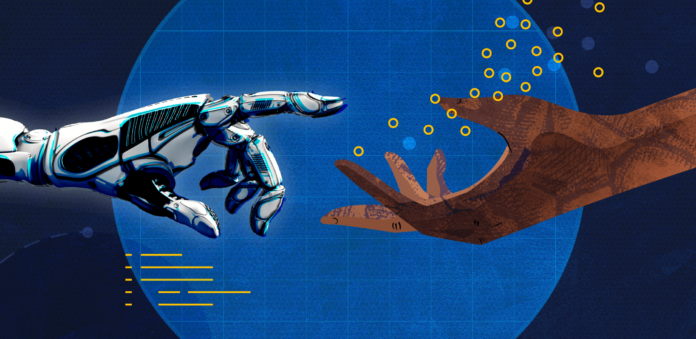Human-in-the-loop (HITL) is the process of leveraging machine and human intelligence to construct machine learning-based AI models.
If you have a massive dataset, an ML system can easily make accurate conclusions after learning from them. But first, the computer must learn how to properly recognize the relevant criteria and arrive at the right results from a given number and quality of data sets.
Here, human-in-the-loop machine learning comes into play to create a continuous circle where machine learning algorithms are tested, tuned, and verified. In this loop, people assist the machine in becoming intelligent, more trained, more confident in making rapid and accurate decisions in real-life situations, and helping to train the algorithms.
Applications:
Two machine learning algorithm methods – supervised and unsupervised learning – have been merged into the human-in-the-loop system. Supervised machine learning train algorithms on labelled or annotated data sets to make accurate predictions in the real world. Unsupervised machine learning, on the other hand, has no labels assigned to the learning algorithm. It is left to its own devices to identify structure in the material and memorize it in its way.
In HITL, humans first label the algorithm’s training data and then put it into the algorithms to make the various situations intelligible to machines. Humans later review and analyze the findings or predictions for ML model validation. And if the results are erroneous, the algorithms are tuned, the data is re-checked and put back into the algorithm to create the correct predictions.
Impact on Machine Learning
It is not feasible to conduct a machine learning process without human input. Algorithms cannot learn everything without compatibility. A machine learning model, for example, cannot grasp raw data until humans explain and make it intelligible to computers.
When data provide in an unstructured format, the data labelling process is the initial stage in developing a credible model trained by algorithms. Unstructured data, such as texts, audio, video, photos, and other unlabeled material, cannot be understood by an algorithm.
Human-in-the-loop is not a notion that applies to all machine learning projects. When there isn’t a lot of data available, the HITL technique is applied. Human-in-the-loop is appropriate since, at this time, humans can make far better decisions than robots. Using this, humans create ML training data sets to assist the machine in learning from such data.
Different types of datasets are required for machine learning training, depending on the algorithms. For a variety of data labelling operations, apply the human-in-the-loop technique. If you want to teach your model to recognize the form of items such as a road animal or other objects, bounding box annotation is the easiest way to make them identifiable to machines.
Follow and connect with us on Facebook, LinkedIn & Twitter

